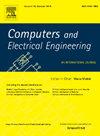智能AMI系统中防范虚假数据注入的两层基于声誉的区块链架构
IF 4
3区 计算机科学
Q1 COMPUTER SCIENCE, HARDWARE & ARCHITECTURE
引用次数: 0
摘要
虚假数据注入攻击(FDIA)是针对智能高级计量基础设施(AMI)系统的主要网络攻击之一,因为它涉及向AMI系统注入伪造数据,这可能会给公用事业和消费者造成重大的物理和经济损失。在本文中,我们提出了一个基于声誉的双层区块链框架来保护数据测量免受FDIA的影响。该框架由两个主要区块链组成:(1)邻居局域网(NAN)区块链,旨在确保从智能电表传输到数据集中器的测量数据的完整性;(2)广域网(WAN)区块链,旨在保护从集中器传输到公用事业控制中心的测量数据。区块链在一个名为PoR- bft的共识协议上运行,该协议结合了提议的声誉证明(PoR)共识和实际拜占庭容错(PBFT)共识。这种组合可以评估节点行为并检测网络中的恶意节点。我们分析和评估了所提议框架的安全性和可扩展性,并将其与两种最先进的解决方案(One-BC和WAN-BC)进行了比较。对比表明,我们的框架产生的成功攻击概率最低,在可扩展性方面是WAN-BC最接近的竞争对手。通过应用Pareto最优前端算法,我们的框架确保了可伸缩性和安全性之间的最佳权衡。我们还使用HyperLedger Fabric平台证明了PoR-BFT共识在延迟和恶意节点检测率方面与PBFT相比的有效性。本文章由计算机程序翻译,如有差异,请以英文原文为准。
Two-tier reputation-based blockchain architecture against false data injection in smart AMI systems
False Data Injection Attack (FDIA) represents one of the major cyber attacks against smart Advanced Metering Infrastructure (AMI) systems, as it involves injecting fabricated data into the AMI system, which could cause significant physical and economic losses for utilities and consumers. In this paper, we propose a two-tier reputation-based blockchain framework to protect data measurements from FDIA. The framework consists of two main blockchains: (1) Neighbor Area Network (NAN) blockchain, which aims to ensure the integrity of measurements that are transmitted from the smart meters to the data concentrators, and (2) Wide Area Network (WAN) blockchain, which aims to protect the measurements that are transmitted from the concentrators to the control center of the utility. The blockchains operate on a consensus protocol named PoR-BFT, which combines a proposed Proof-of-Reputation (PoR) consensus and Practical Byzantine fault tolerance (PBFT) consensus. This combination enables the evaluation of node behavior and the detection of malicious nodes in the network. We analyze and evaluate the security and scalability of the proposed framework and compare it to two state-of-the-art solutions, named One-BC and WAN-BC. The comparison shows that our framework incurs the lowest successful attack probability, and it is the closest competitor to WAN-BC in terms of scalability. By applying the Pareto optimal front algorithm, our framework ensures the best trade-off between scalability and security. We also use HyperLedger Fabric platform to demonstrate the effectiveness of PoR-BFT consensus compared to PBFT in terms of latency and detection rate of malicious nodes.
求助全文
通过发布文献求助,成功后即可免费获取论文全文。
去求助
来源期刊

Computers & Electrical Engineering
工程技术-工程:电子与电气
CiteScore
9.20
自引率
7.00%
发文量
661
审稿时长
47 days
期刊介绍:
The impact of computers has nowhere been more revolutionary than in electrical engineering. The design, analysis, and operation of electrical and electronic systems are now dominated by computers, a transformation that has been motivated by the natural ease of interface between computers and electrical systems, and the promise of spectacular improvements in speed and efficiency.
Published since 1973, Computers & Electrical Engineering provides rapid publication of topical research into the integration of computer technology and computational techniques with electrical and electronic systems. The journal publishes papers featuring novel implementations of computers and computational techniques in areas like signal and image processing, high-performance computing, parallel processing, and communications. Special attention will be paid to papers describing innovative architectures, algorithms, and software tools.
 求助内容:
求助内容: 应助结果提醒方式:
应助结果提醒方式:


